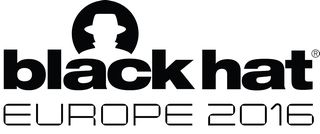
 During the past few weeks, I travelled around the world to give talks at several great security conferences, such as Ruxcon (Melbourne, Australia), PacSec (Tokyo, Japan), Black Hat Europe (London, UK) and finally Security PWNing Conference (Warsaw, Poland). At a majority of the events, I presented the results of my Windows Metafile security research, which took place earlier this year and yielded vulnerabilities in GDI (exploitable e.g. in Internet Explorer), GDI+ (e.g. Microsoft Office), ATMFD.DLL (Windows local privilege escalation) and the Virtual Printers mechanism in VMware Workstation. As part of the talks, I explained what GDI and metafiles really are, the process I followed while hunting for and identifying the vulnerabilities, and the exploitation paths for some of them. Finally, I discussed my approach to fuzzing a user-mode Windows DLL module on Linux machines (cross-platform), on the example of a 3rd party JPEG2000 decoder used in VMware products. Since my allocated time slots at both Ruxcon and PacSec were too short to cover the entirety of the material, I talked about the ATMFD.DLL vulnerabilities exclusively at Ruxcon, and about GDI+ only at PacSec. A complete list of the EMF bugs that were mentioned in the presentations can be found in the Google Project Zero tracker.
During the past few weeks, I travelled around the world to give talks at several great security conferences, such as Ruxcon (Melbourne, Australia), PacSec (Tokyo, Japan), Black Hat Europe (London, UK) and finally Security PWNing Conference (Warsaw, Poland). At a majority of the events, I presented the results of my Windows Metafile security research, which took place earlier this year and yielded vulnerabilities in GDI (exploitable e.g. in Internet Explorer), GDI+ (e.g. Microsoft Office), ATMFD.DLL (Windows local privilege escalation) and the Virtual Printers mechanism in VMware Workstation. As part of the talks, I explained what GDI and metafiles really are, the process I followed while hunting for and identifying the vulnerabilities, and the exploitation paths for some of them. Finally, I discussed my approach to fuzzing a user-mode Windows DLL module on Linux machines (cross-platform), on the example of a 3rd party JPEG2000 decoder used in VMware products. Since my allocated time slots at both Ruxcon and PacSec were too short to cover the entirety of the material, I talked about the ATMFD.DLL vulnerabilities exclusively at Ruxcon, and about GDI+ only at PacSec. A complete list of the EMF bugs that were mentioned in the presentations can be found in the Google Project Zero tracker.
 The second talk (presented at BH) focused purely on fuzzing and the various thoughts, techniques and results I arrived at after actively using this approach to uncover software security flaws for more than 5 years, both as part of and outside of work. The topics included gathering initial corpora of input files, extracting code coverage information from running programs, using this information to “distill” and manage live corpora (using a parallelized algorithm), interacting with our target application on various levels, and effectively mutating the input data to accomplish the best results. The presentation was then concluded with a brief analysis of my recent Windows kernel font fuzzing initiative, which has resulted in the discovery of 18 issues so far.
The second talk (presented at BH) focused purely on fuzzing and the various thoughts, techniques and results I arrived at after actively using this approach to uncover software security flaws for more than 5 years, both as part of and outside of work. The topics included gathering initial corpora of input files, extracting code coverage information from running programs, using this information to “distill” and manage live corpora (using a parallelized algorithm), interacting with our target application on various levels, and effectively mutating the input data to accomplish the best results. The presentation was then concluded with a brief analysis of my recent Windows kernel font fuzzing initiative, which has resulted in the discovery of 18 issues so far.
In this post, I would like to publicly announce both slide decks used in the above talks. While some of the conferences have already made them available on their corresponding websites, the slides linked here include some further fixes and improvements, and specifically the EMF ones are all combined into a single PDF file, forming a self-contained source of information about all the discovered bugs. Enjoy, and as always, feel free to send questions, comments and suggestions.
Windows Metafiles: An Analysis of the EMF Attack Surface & Recent Vulnerabilities
- Full slide deck (PDF, 9.14 MB)
- Ruxcon version (missing GDI+, PDF, 7.54 MB)
- PacSec version (missing ATMFD.DLL, SlideShare)
- Security Pwning Conference version (Polish, missing ATMFD.DLL, PDF, 7.21 MB)
Effective File Format Fuzzing – Thoughts, Techniques and Results
- Slide deck (PDF, 6.11 MB)
- Black Hat mirror
WMF was full of bugs even in 2005. See MS05-053 and http://pferrie.host22.com/papers/wmf.pdf
@Peter Ferrie: Nice, thanks for the link. :-) The SetAbortProc bug is discussed on slides 40-46, but it’s great to see a wider context.